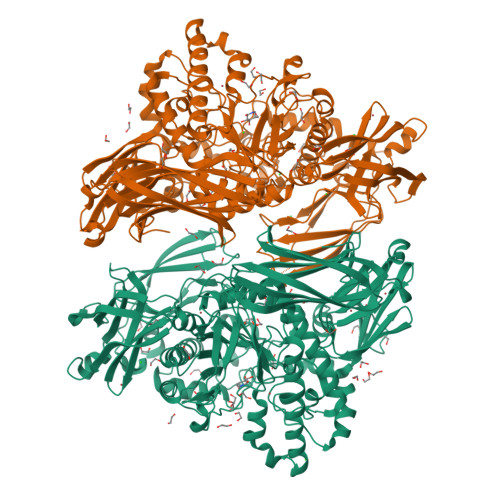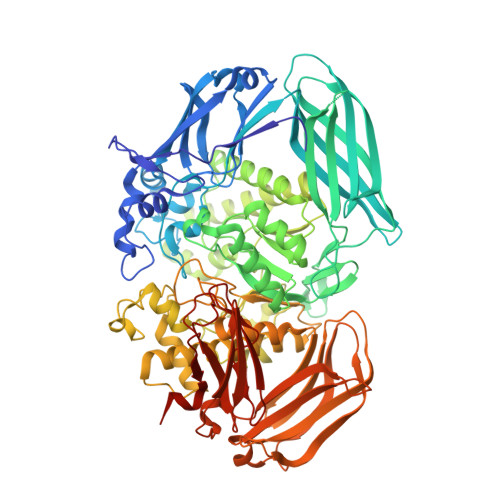Structural and Biochemical Evidence for a Boat-Like Transition State in Beta-Mannosidases.
Tailford, L.E., Offen, W.A., Smith, N.L., Dumon, C., Morland, C., Gratien, J., Heck, M.P., Stick, R.V., Bleriot, Y., Vasella, A., Gilbert, H.J., Davies, G.J.(2008) Nat Chem Biol 4: 306
- PubMed: 18408714
- DOI: https://doi.org/10.1038/nchembio.81
- Primary Citation of Related Structures:
2VJX, 2VL4, 2VMF, 2VO5, 2VOT, 2VQT, 2VQU, 2VR4 - PubMed Abstract:
Enzyme inhibition through mimicry of the transition state is a major area for the design of new therapeutic agents. Emerging evidence suggests that many retaining glycosidases that are active on alpha- or beta-mannosides harness unusual B2,5 (boat) transition states. Here we present the analysis of 25 putative beta-mannosidase inhibitors, whose Ki values range from nanomolar to millimolar, on the Bacteroides thetaiotaomicron beta-mannosidase BtMan2A. B2,5 or closely related conformations were observed for all tightly binding compounds. Subsequent linear free energy relationships that correlate log Ki with log Km/kcat for a series of active center variants highlight aryl-substituted mannoimidazoles as powerful transition state mimics in which the binding energy of the aryl group enhances both binding and the degree of transition state mimicry. Support for a B2,5 transition state during enzymatic beta-mannosidase hydrolysis should also facilitate the design and exploitation of transition state mimics for the inhibition of retaining alpha-mannosidases--an area that is emerging for anticancer therapeutics.
Organizational Affiliation:
Institute for Cell and Molecular Biosciences, The Medical School, Newcastle University, Framlington Place, Newcastle upon Tyne NE2 4HH, UK.





















